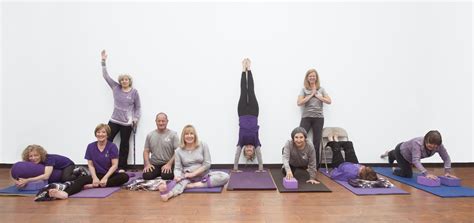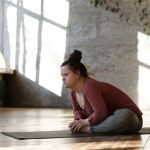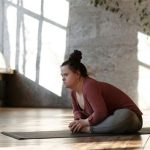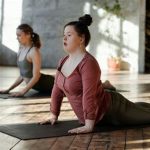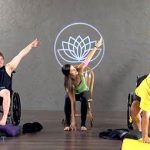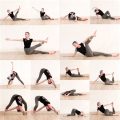Accessible Yoga for Individuals with Disabilities: Safe and Effective Practices
Yoga has long been celebrated for its ability to enhance physical, mental, and emotional well-being. However, individuals with disabilities are often left wondering whether yoga is accessible to them. The good news is that yoga can be adapted to accommodate various physical limitations, offering numerous benefits to everyone, regardless of mobility challenges. In this article, we explore safe and effective yoga practices tailored specifically for people with disabilities, focusing on enhancing accessibility without compromising on the quality of the experience.
Introduction
Yoga has gained popularity globally as a holistic practice that merges physical postures, breathing exercises, and mindfulness. Despite its benefits, people with disabilities may face barriers in accessing traditional yoga classes due to limited mobility, chronic conditions, or sensory impairments. This article provides a comprehensive guide to adapting yoga for individuals with disabilities, offering evidence-based practices, practical applications, and ethical considerations. The goal is to empower people of all abilities to enjoy yoga’s benefits while ensuring safe and effective practices.
Key Concepts
- Adaptive Yoga: Modifying traditional yoga poses and sequences to suit the physical abilities of individuals with disabilities.
- Chair Yoga: A form of yoga practiced sitting on a chair or using a chair for support, ideal for individuals with limited mobility or balance issues.
- Breathwork: Pranayama exercises adapted to assist people with respiratory limitations or postural constraints.
- Mindfulness: A practice that emphasizes the awareness of body sensations, useful for people with disabilities to connect with their bodies in new ways.
- Inclusion: Creating an environment that accommodates different levels of ability, ensuring no one feels excluded from yoga practices.
Historical Context
Yoga has roots that trace back over 5,000 years in ancient India, with a history of adapting to meet the needs of various practitioners. Traditionally, yoga was practiced by those who could master complex postures, yet over time, more inclusive approaches have emerged. The concept of adaptive yoga began gaining traction in the late 20th century as more educators recognized the need to make yoga accessible to people with disabilities. Early pioneers, such as Matthew Sanford and Jivana Heyman, revolutionized yoga by focusing on inclusivity, laying the foundation for what is now known as adaptive yoga.
Current State Analysis
Today, adaptive yoga is widely practiced in different formats, including chair yoga, yoga for amputees, and yoga for individuals with cerebral palsy or spinal cord injuries. However, the accessibility of yoga for people with disabilities remains inconsistent across the board, with many yoga studios lacking the training and resources needed to cater to this demographic. Although some online platforms and organizations, such as the Accessible Yoga Network, offer specialized classes, awareness and access to these resources need to be further expanded. The current state also sees ongoing research into how yoga can aid individuals with neurological and musculoskeletal conditions.
Practical Applications
Adaptive yoga can be customized to fit the specific needs of each individual, allowing for personalized benefits. Here are some practical applications:
- Chair Yoga: Useful for people with limited mobility or balance issues. Postures such as seated twists, forward folds, and side stretches can be performed from a chair.
- Supported Standing Poses: Using props such as blocks, walls, or chairs to support standing poses like Warrior I and Tree Pose for people with limb differences or balance challenges.
- Breathwork and Pranayama: Breath control exercises can be practiced even by those with severe physical limitations, improving lung capacity and reducing stress.
- Mindfulness and Meditation: Accessible to everyone, mindfulness practices help cultivate mental clarity, emotional regulation, and inner peace regardless of physical abilities.
Case Studies
| Condition | Yoga Modifications | Outcome |
|---|---|---|
| Spinal Cord Injury | Chair yoga, breathwork, and guided meditation | Improved mental clarity, reduced muscle stiffness |
| Cerebral Palsy | Supported standing postures, seated twists, relaxation techniques | Increased flexibility, enhanced motor control |
| Multiple Sclerosis | Gentle stretches, breath control, and mindfulness | Improved mobility, reduced fatigue |
| Amputation | Balancing poses with chair or wall support | Enhanced balance, mental well-being |
| Arthritis | Slow-paced, low-impact poses like cat-cow and seated forward folds | Reduced joint pain, increased range of motion |
Stakeholder Analysis
- Individuals with Disabilities: The primary beneficiaries of adaptive yoga, seeking safe, inclusive, and effective practices that improve quality of life.
- Yoga Instructors: Need to be trained in adaptive techniques and understand how to modify practices for different abilities.
- Healthcare Providers: Often involved in recommending yoga as a complementary therapy, requiring them to be aware of adaptive yoga options.
- Yoga Studios and Organizations: Should invest in accessibility to accommodate individuals with disabilities, such as providing props and training teachers.
Implementation Guidelines
For adaptive yoga to be effective, a structured approach is required:
- Assessment: Evaluate the individual’s physical limitations and goals before designing a yoga routine.
- Environment: Ensure a safe, accessible space with appropriate props such as chairs, blocks, straps, and blankets.
- Training: Yoga instructors should undergo specific training in adaptive yoga to meet the needs of people with disabilities.
- Support: Partner with healthcare providers to create a well-rounded program that considers medical history and advice.
Ethical Considerations
Offering yoga to individuals with disabilities raises several ethical concerns:
- Inclusion: Ensure that yoga sessions are welcoming and accessible to all individuals, regardless of their abilities.
- Autonomy: Empower individuals to make choices about their yoga practice, respecting their personal preferences and physical limits.
- Non-Harm: Prioritize safety by avoiding poses that could aggravate existing conditions or cause injury.
- Representation: Include instructors and practitioners with disabilities to foster a more inclusive environment.
Limitations and Future Research
While adaptive yoga has shown promise in improving the quality of life for individuals with disabilities, there are still limitations that need addressing:
- Lack of Research: Although anecdotal evidence supports the benefits of adaptive yoga, more clinical studies are needed to measure its effectiveness for specific conditions.
- Access to Resources: In many regions, adaptive yoga classes or trained instructors are not widely available, limiting access for individuals with disabilities.
- Standardization: There is no universal standard for adaptive yoga, leading to variability in the quality and safety of classes.
- Equipment Costs: Some individuals may not be able to afford the specialized props or training required to safely practice adaptive yoga.
Expert Commentary
Yoga experts universally agree that making yoga accessible to individuals with disabilities enriches both the practice and the community. “Adaptive yoga doesn’t water down the practice; it deepens it,” says Jivana Heyman, founder of the Accessible Yoga Network. “By making yoga accessible to everyone, we bring it back to its roots, which are grounded in unity and inclusivity.” Researchers also note the potential of yoga to complement conventional therapies for physical and mental health challenges. Continued collaboration between the healthcare community and yoga practitioners could unlock even greater potential for adaptive yoga to support diverse populations.
